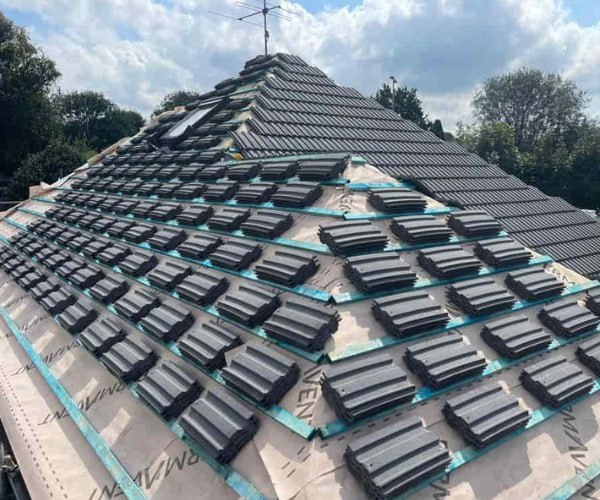Maintaining Lead Flashing in High-Wind Areas
Introduction: Living in an area prone to high winds can be challenging for homeowners, especially regarding roof maintenance. The constant exposure to strong gusts can take a toll on various roofing components, including lead flashing. In this blog post, presented by FDC Roofing Finedon, we’ll discuss the importance of maintaining lead flashing in high-wind areas, potential issues that may arise, and steps you can take to protect your roof.
Understanding Lead Flashing
Lead flashing is a crucial component of your roof’s weatherproofing system. It creates a watertight seal around roof penetrations like chimneys, skylights, and vents. Its flexibility and durability make it an excellent choice for areas where movement and expansion are common.
The Impact of High Winds
High-wind areas are characterised by strong, gusty winds that can reach significant speeds. These winds can exert considerable force on your roofing system, including the lead flashing:
1. Lifting and Displacement: Strong winds can lift and displace lead flashing, breaking the seal around roof penetrations. This can lead to water leaks and compromised weatherproofing.
2. Stress and Wear: Prolonged exposure to high winds can stress and wear down lead flashing, making it more susceptible to damage and deterioration over time.
3. Debris Impact: Wind-blown debris, such as tree branches or airborne objects, can impact lead flashing, causing dents, dings, or surface damage.
Maintaining Lead Flashing in High-Wind Areas
To ensure the longevity and effectiveness of your lead flashing in high-wind areas, consider the following maintenance tips:
1. Regular Inspections: Conduct regular visual inspections of your lead flashing, paying attention to signs of displacement, damage, or wear. Look for gaps or separations around roof penetrations.
2. Secure Flashing: Reinforce the attachment of lead flashing using appropriate sealants or fasteners to prevent it from lifting during high winds.
3. Repairs and Replacements: Promptly address any damage or wear by repairing or replacing the affected sections of lead flashing. DIY repairs may be possible for minor issues, but it’s advisable to consult a roofing professional for more extensive repairs or replacements.
4. Reinforce Sealing: Ensure the sealing around roof penetrations is robust and properly maintained. Adding additional layers of sealant can provide extra protection against wind-driven rain.
5. Wind-Resistant Flashing: Consider using wind-resistant flashing options designed to withstand the forces of high winds. Discuss these options with a roofing professional to determine the best choice for your specific needs.
Conclusion: Maintaining lead flashing in high-wind areas is crucial to protect your roofing system and prevent water leaks. Regular inspections, secure attachment, and prompt repairs or replacements are key to ensuring the longevity and effectiveness of your lead flashing. If you reside in a high-wind area and need assistance with lead flashing maintenance or repairs, contact FDC Roofing Finedon for expert guidance and roofing solutions tailored to your unique requirements.
Call us on: 01933 829 064
Click here to find out more about FDC Roofing Finedon
Click here to complete our contact form and see how we can help with your roofing needs.

